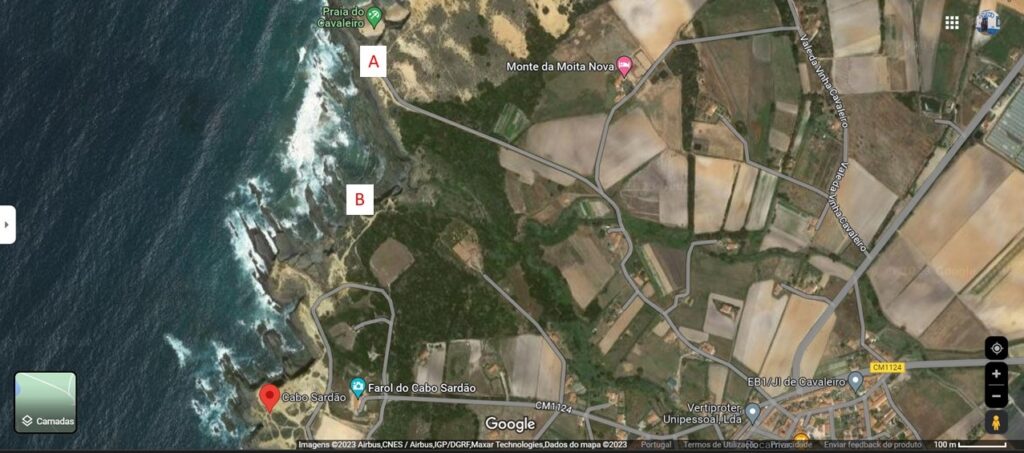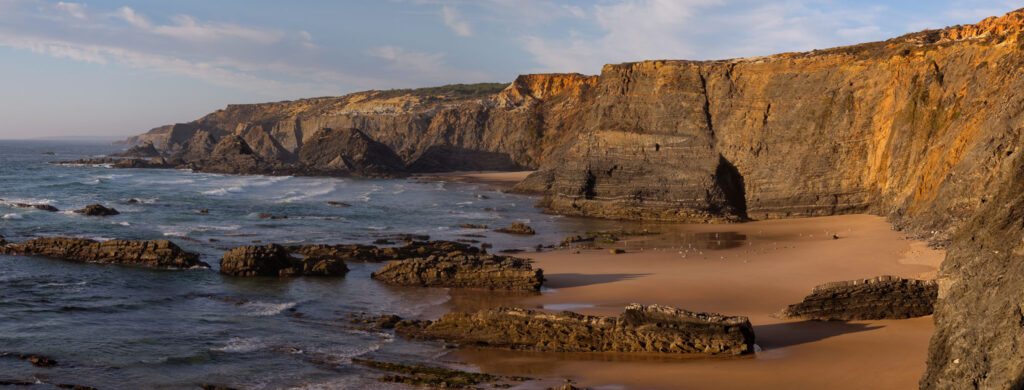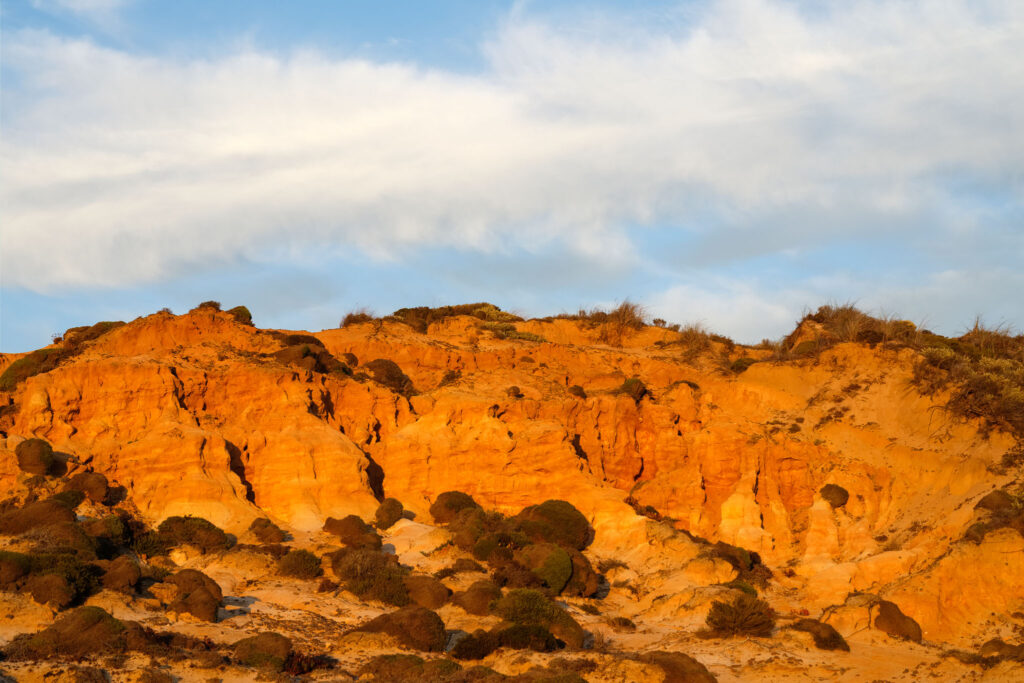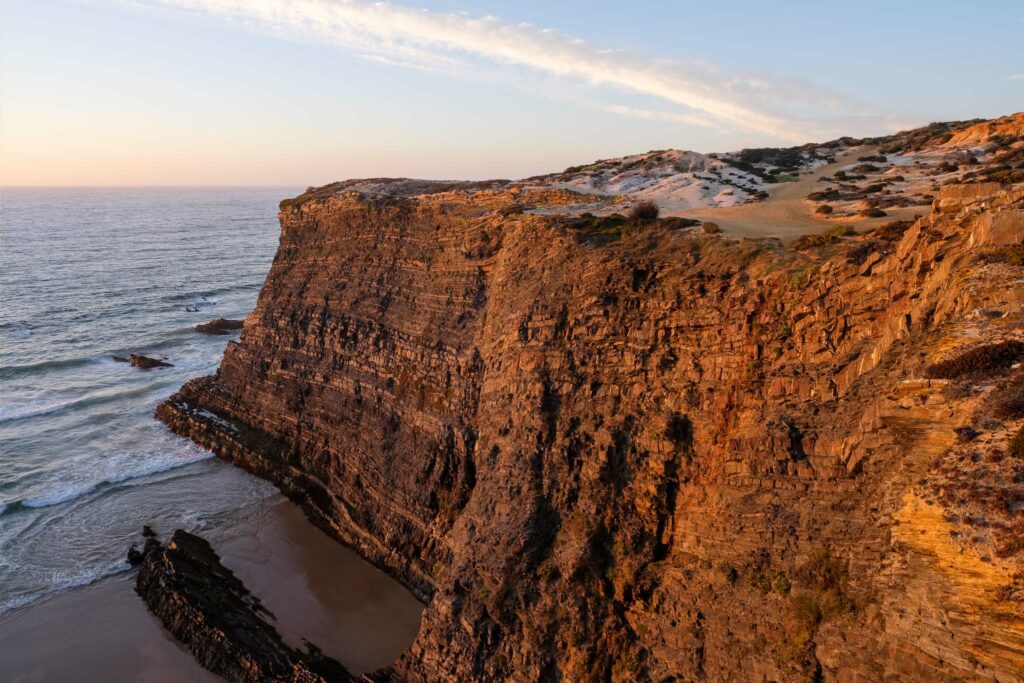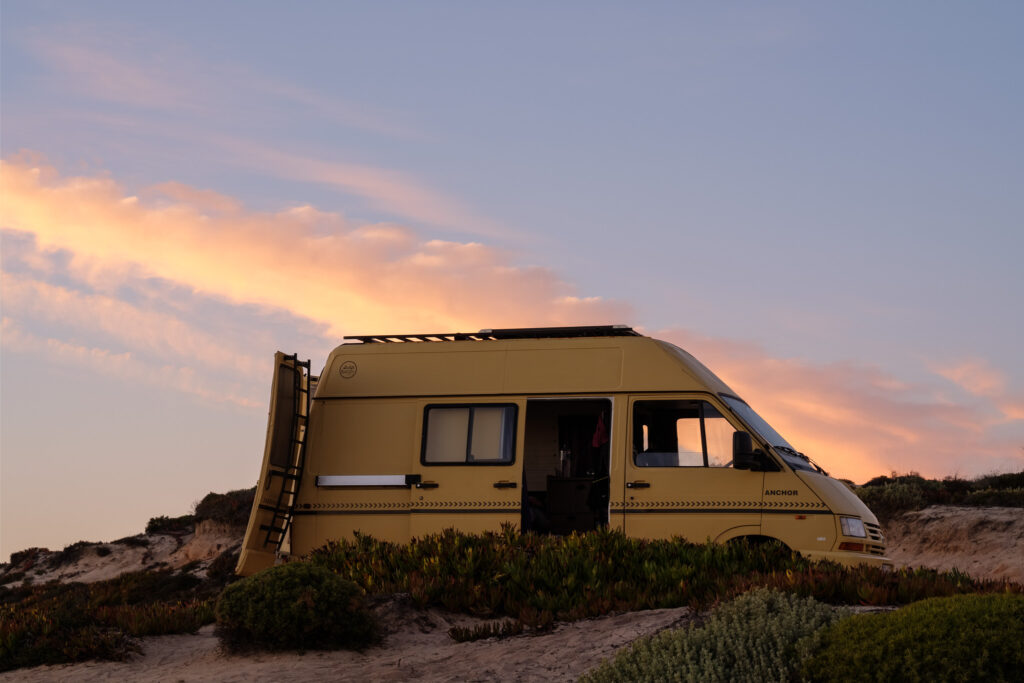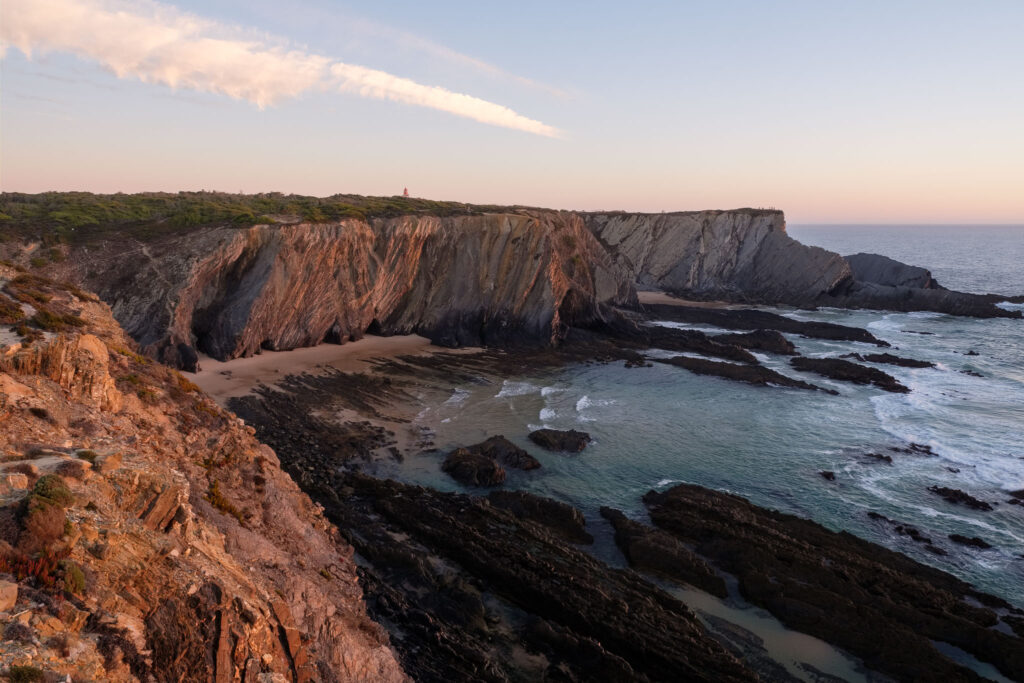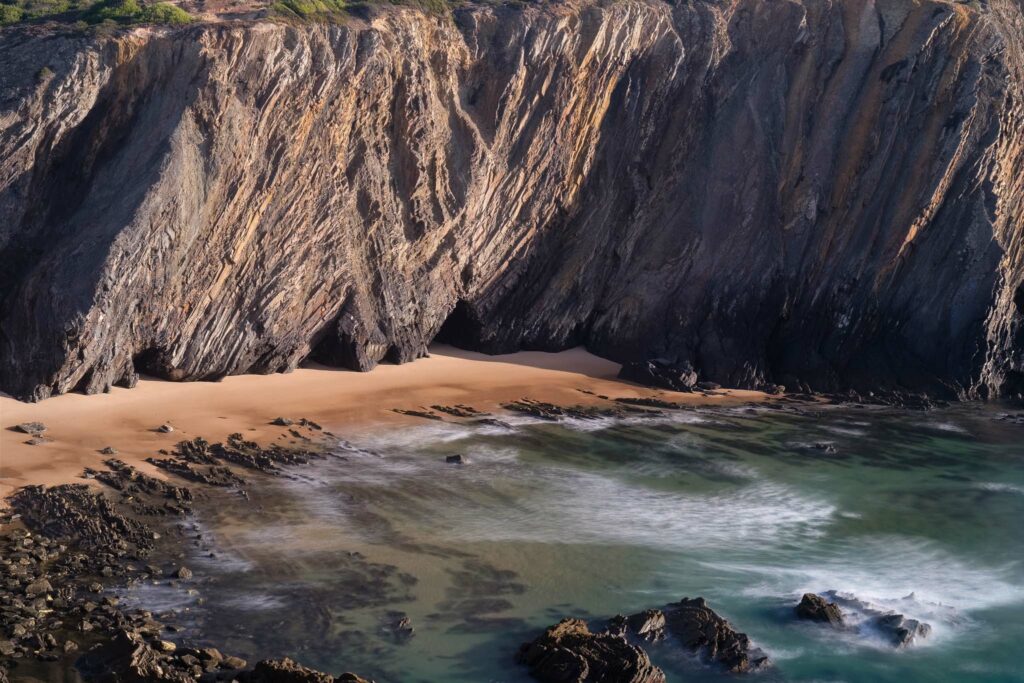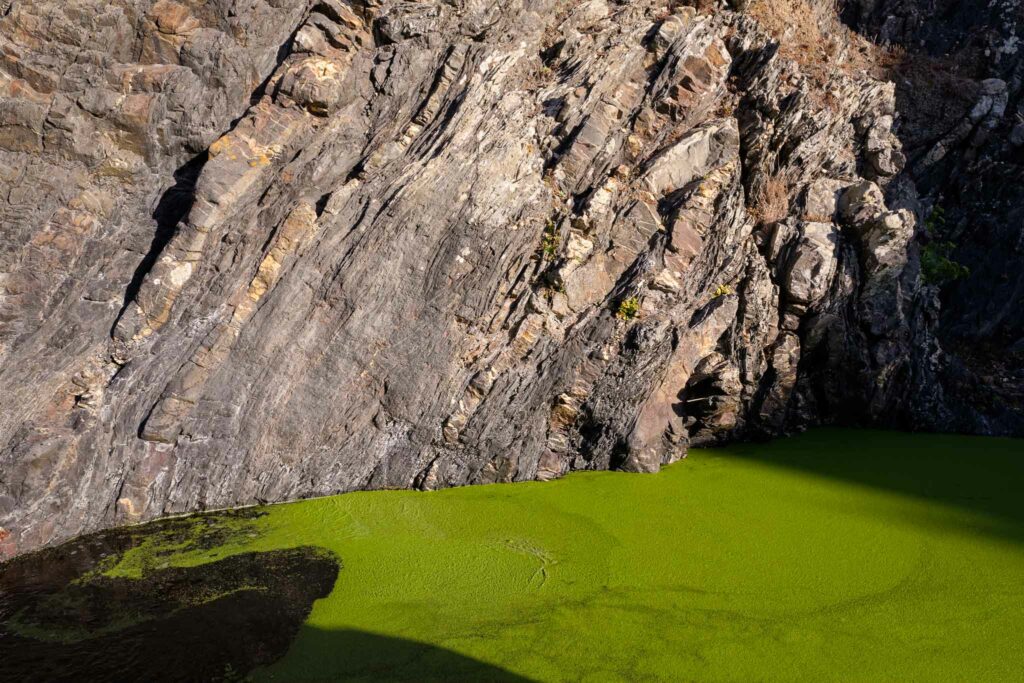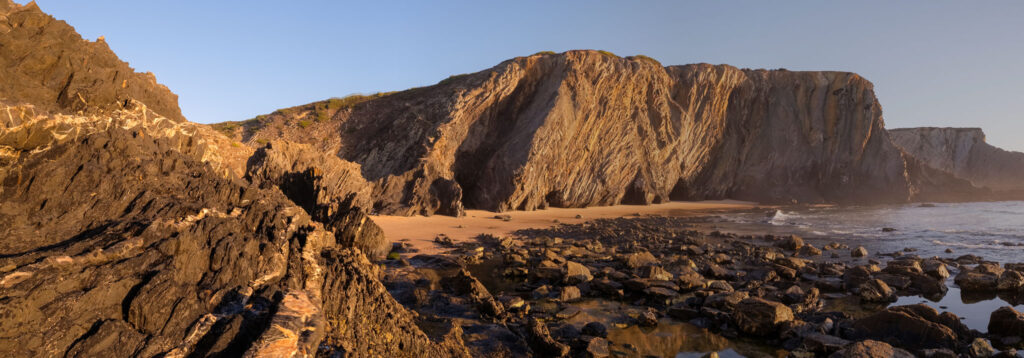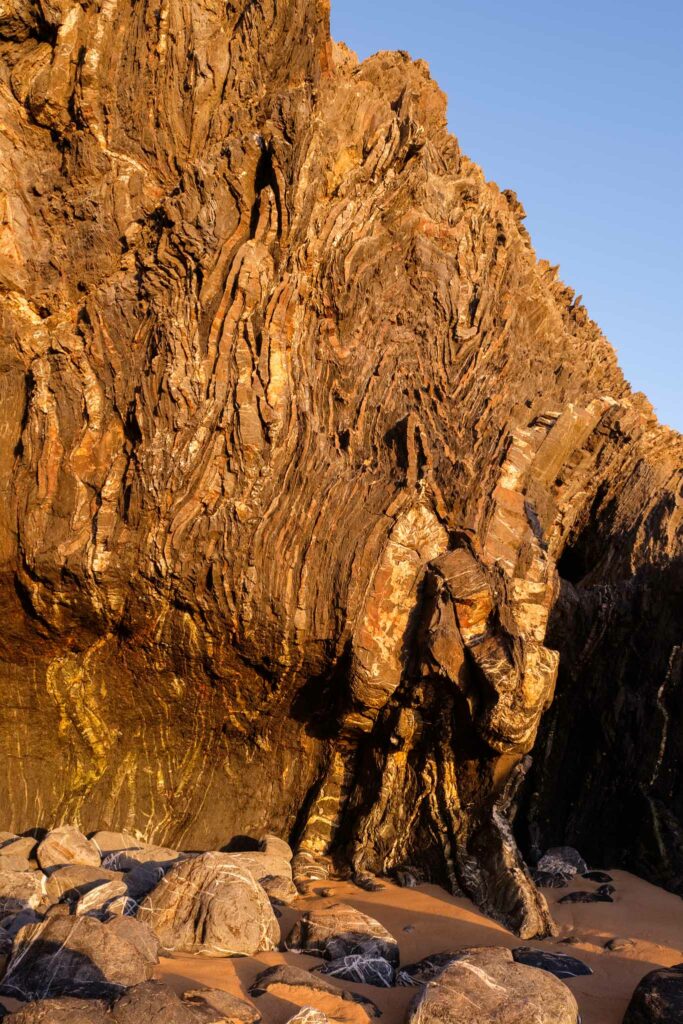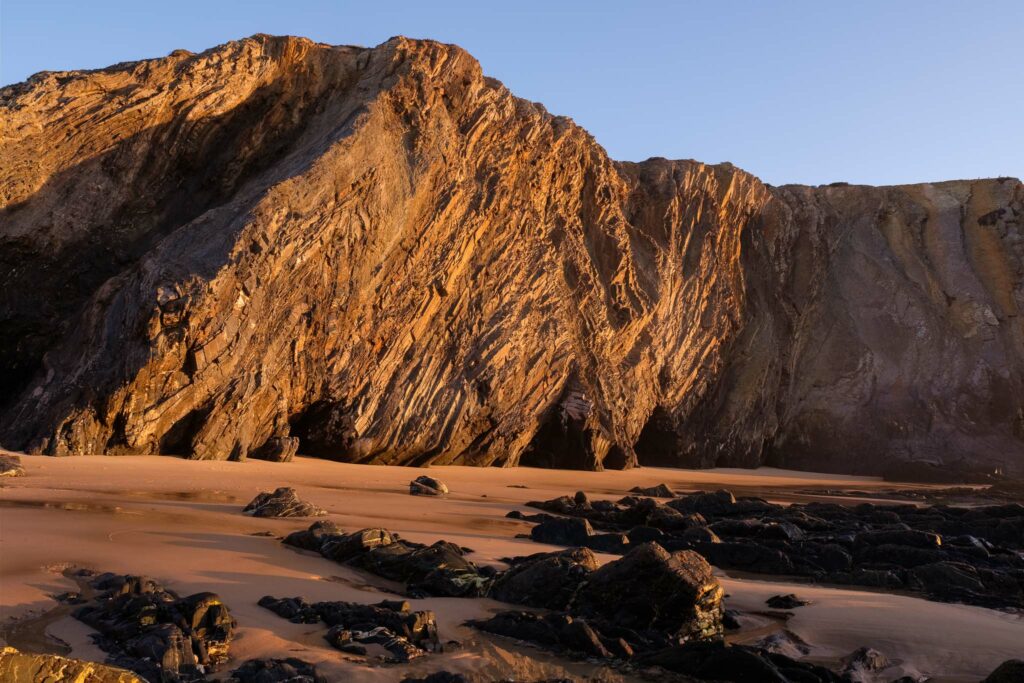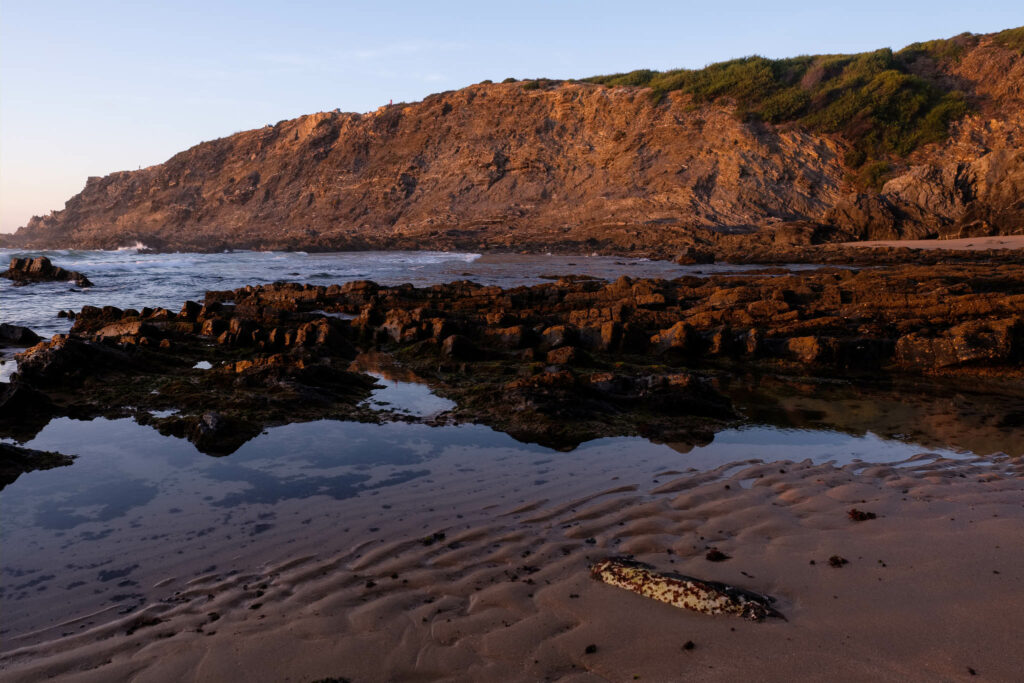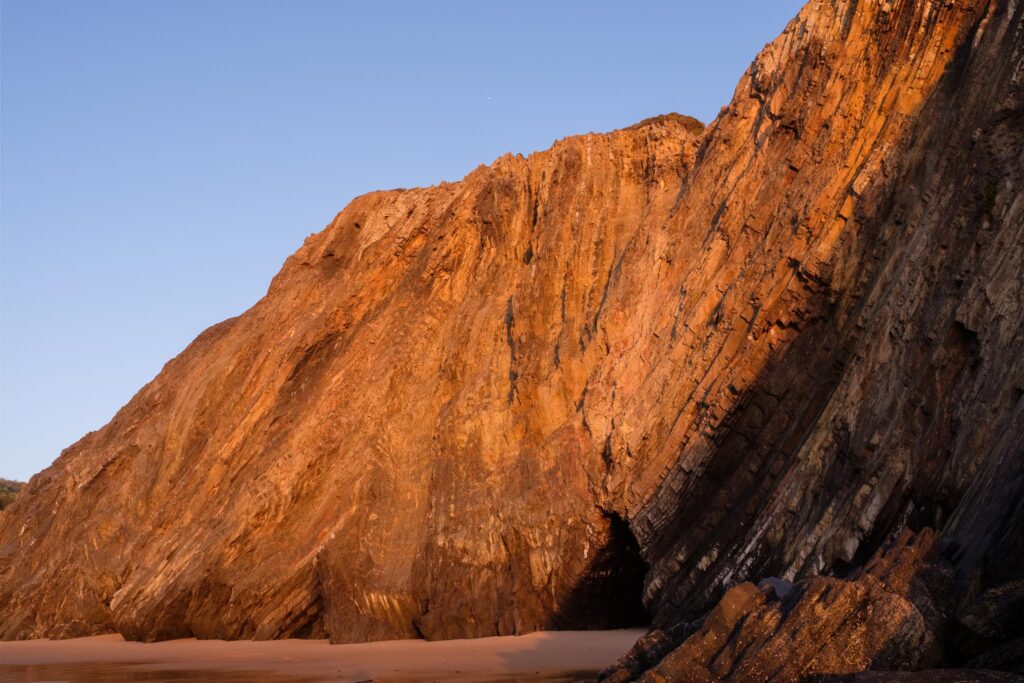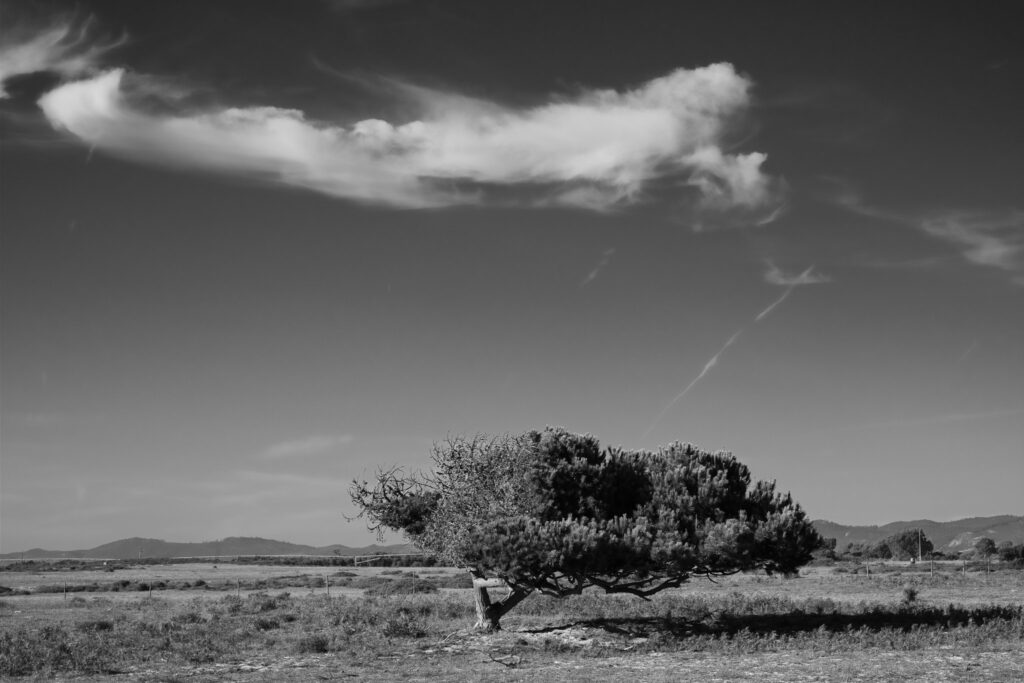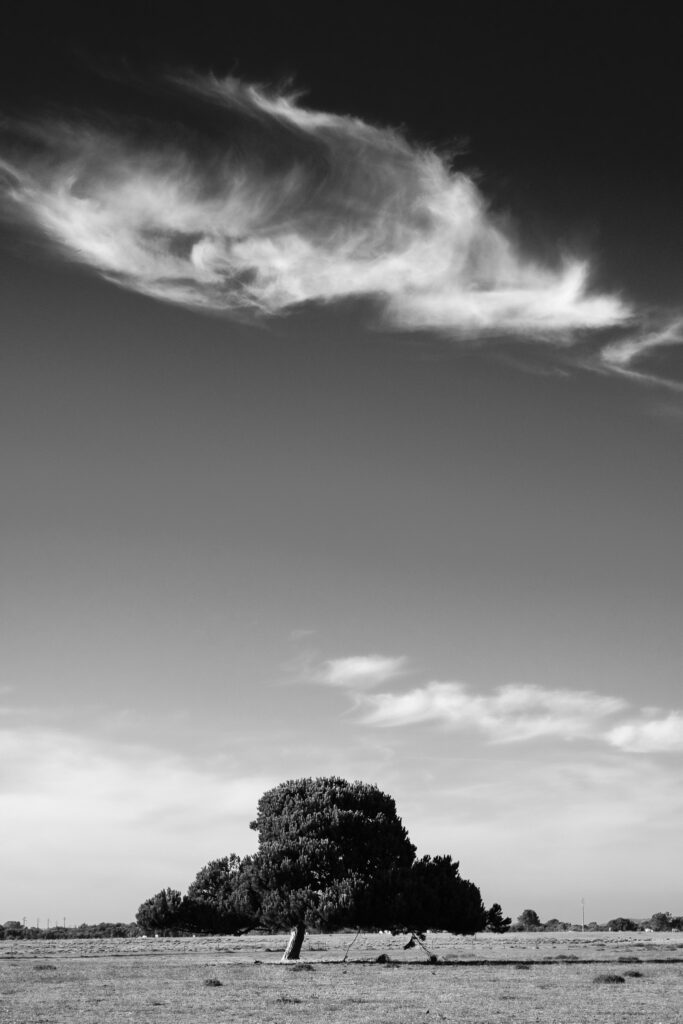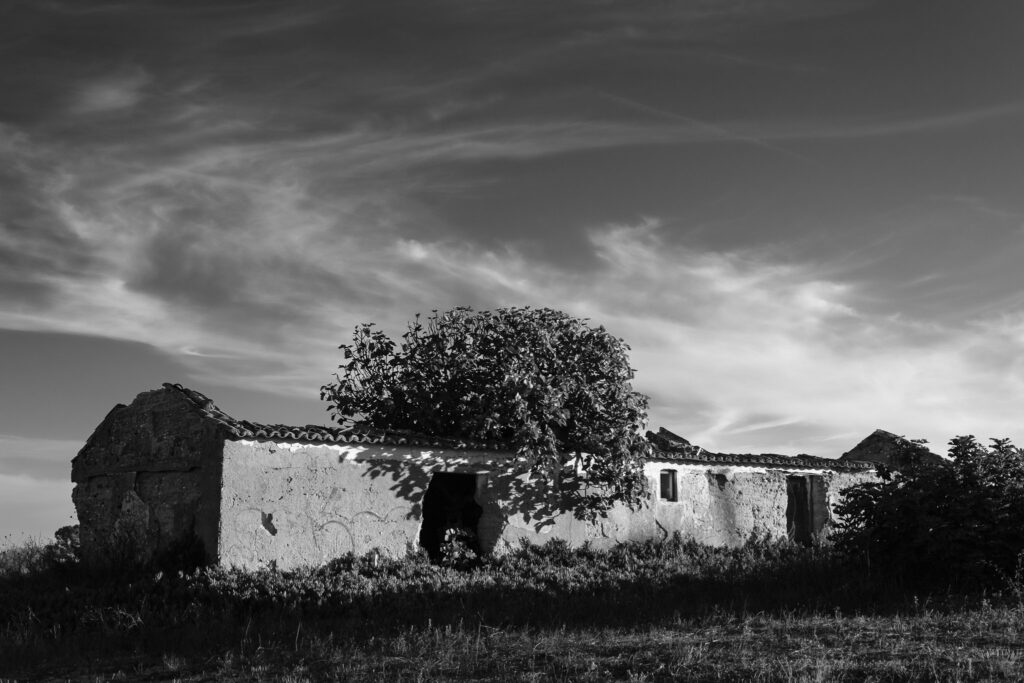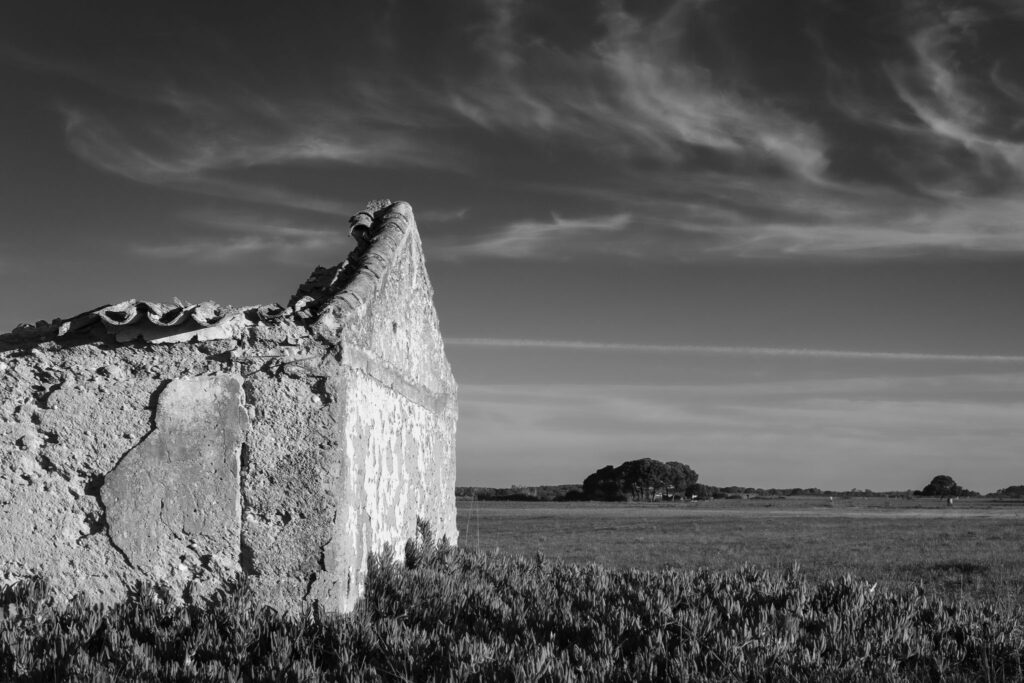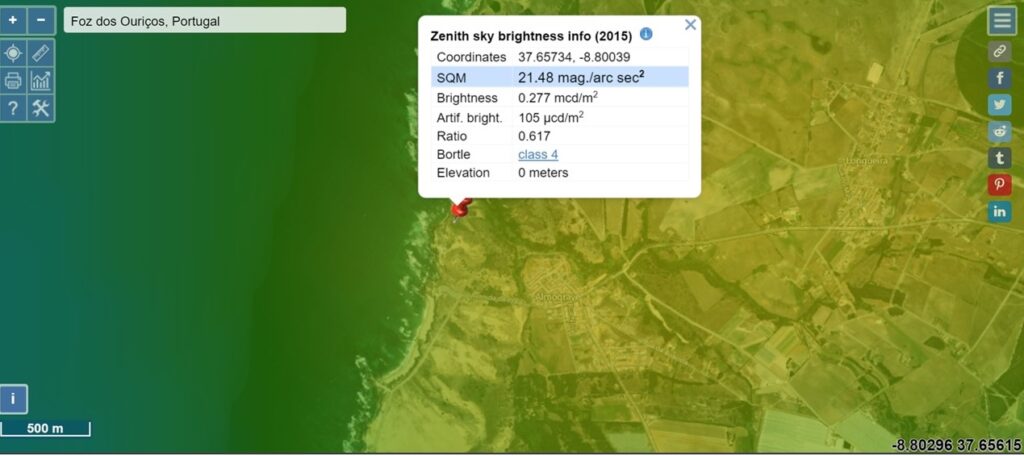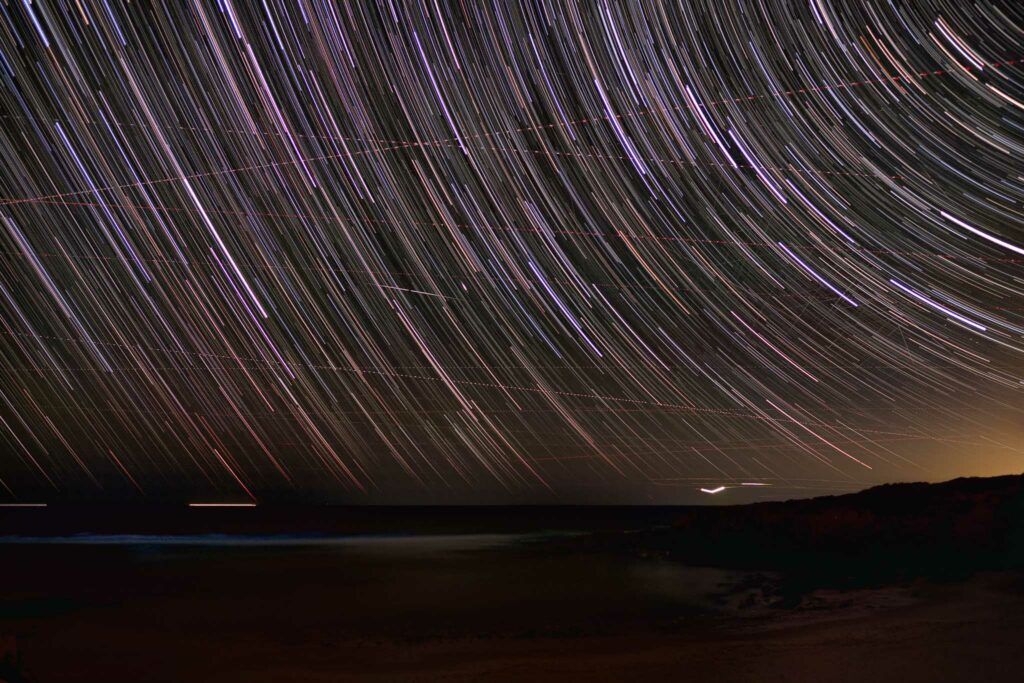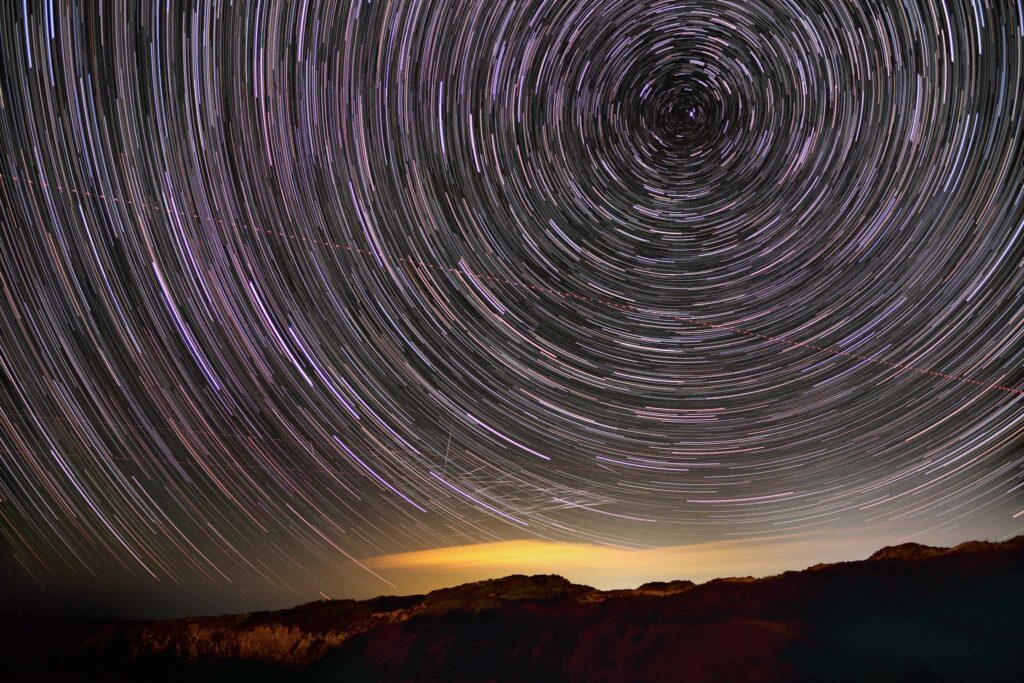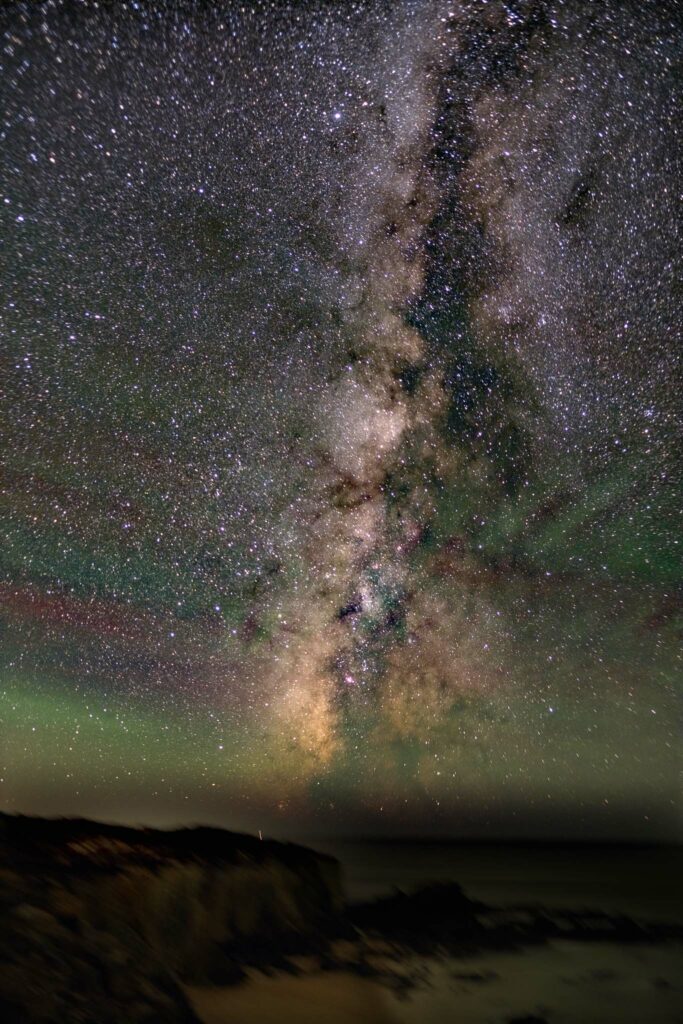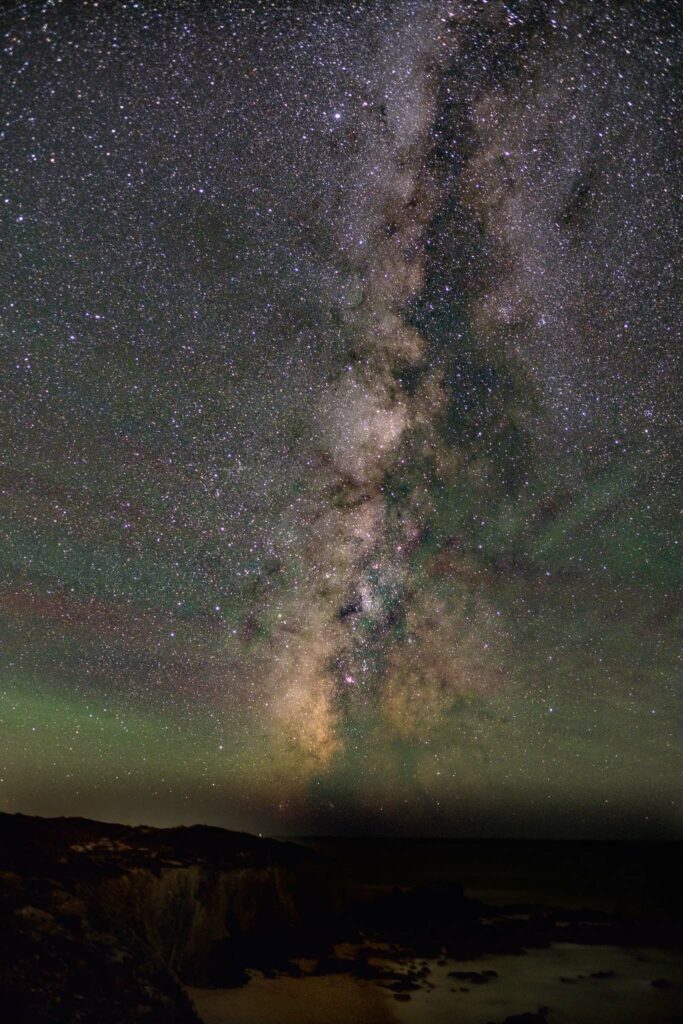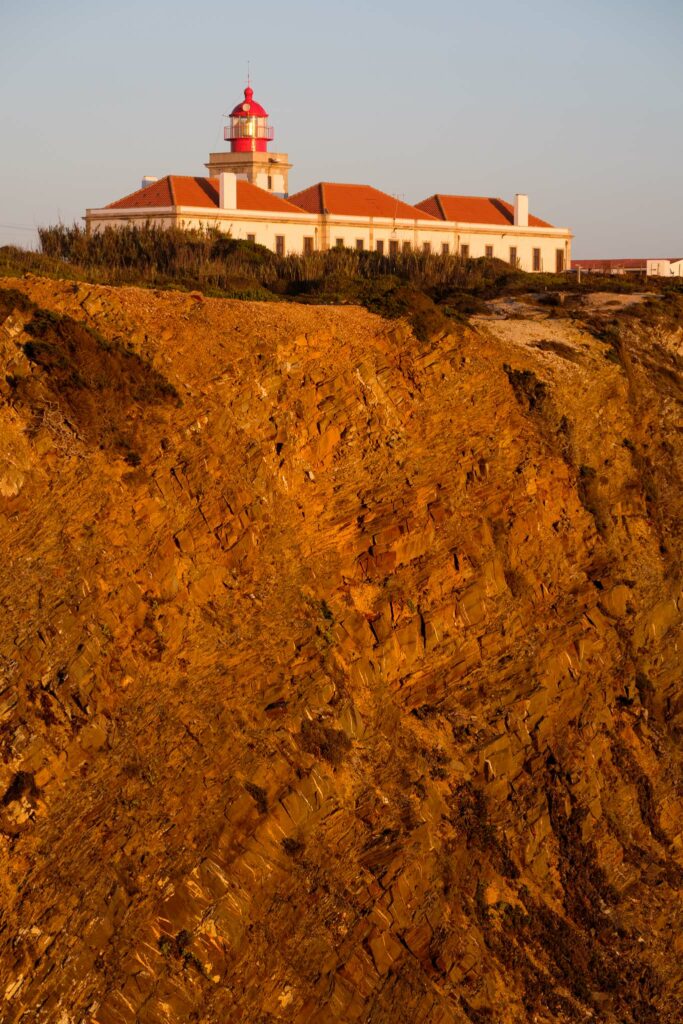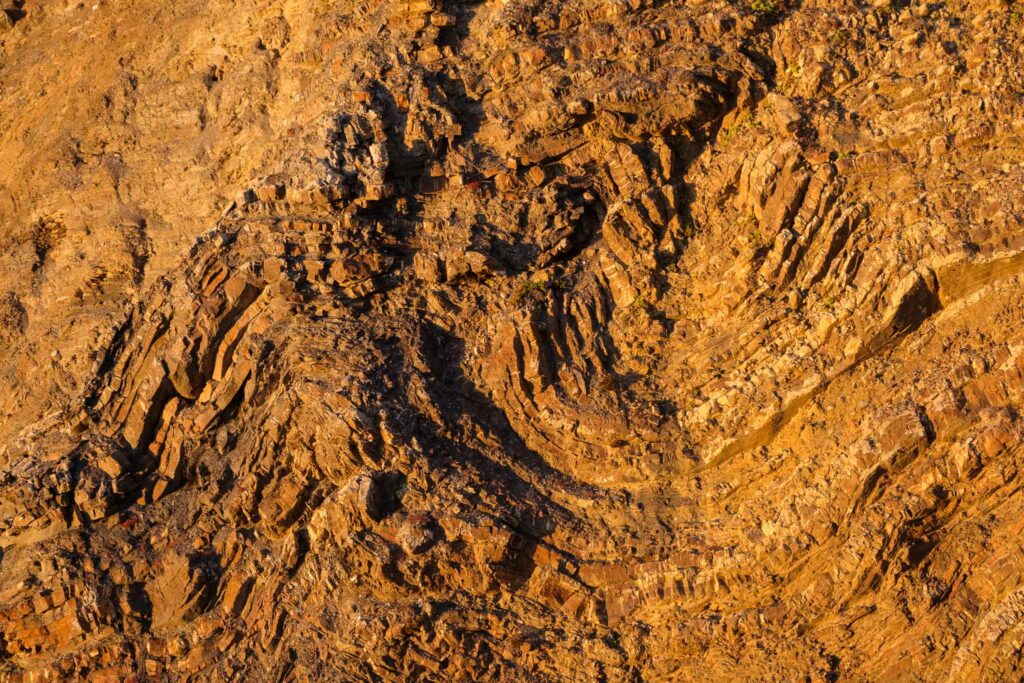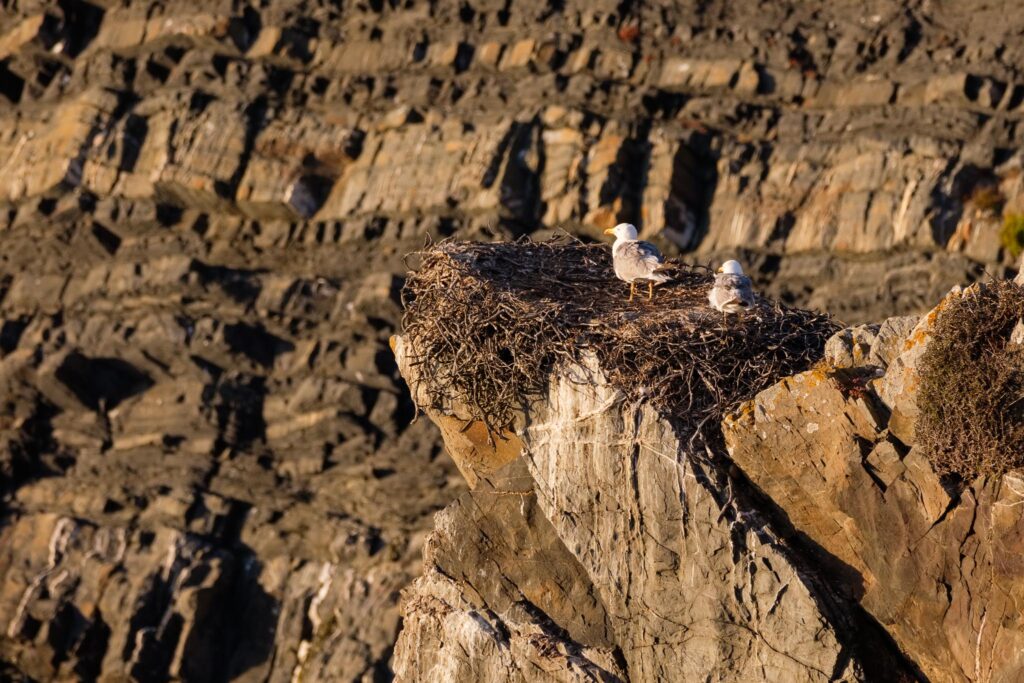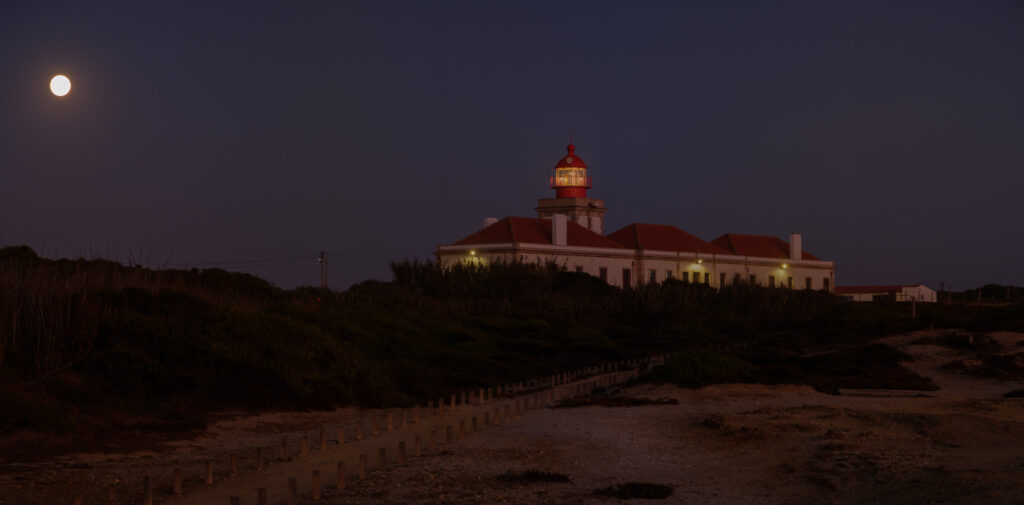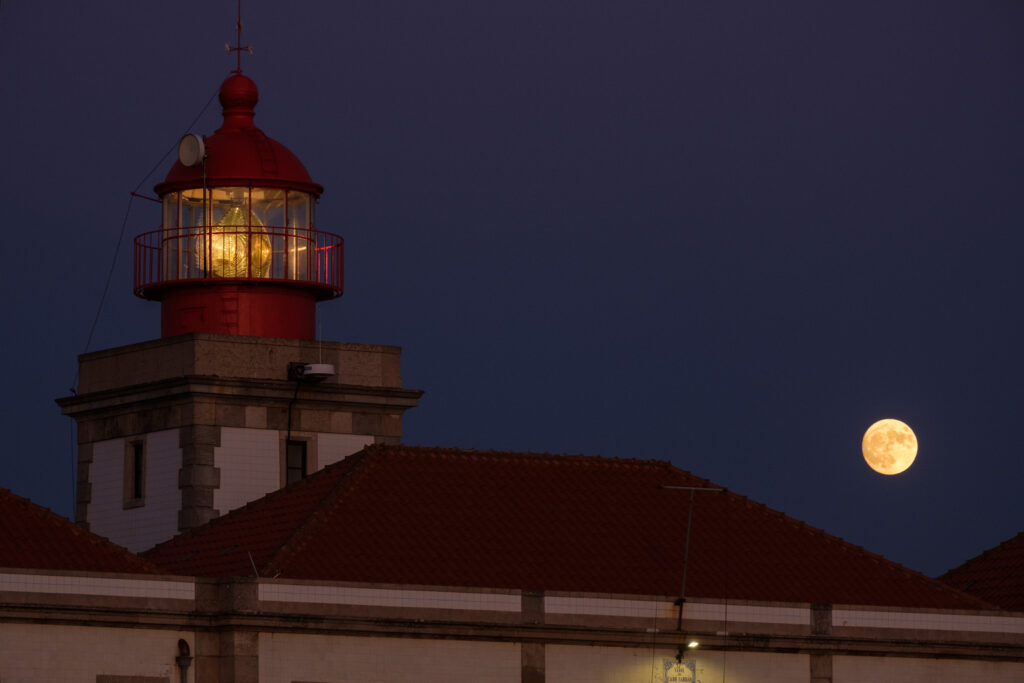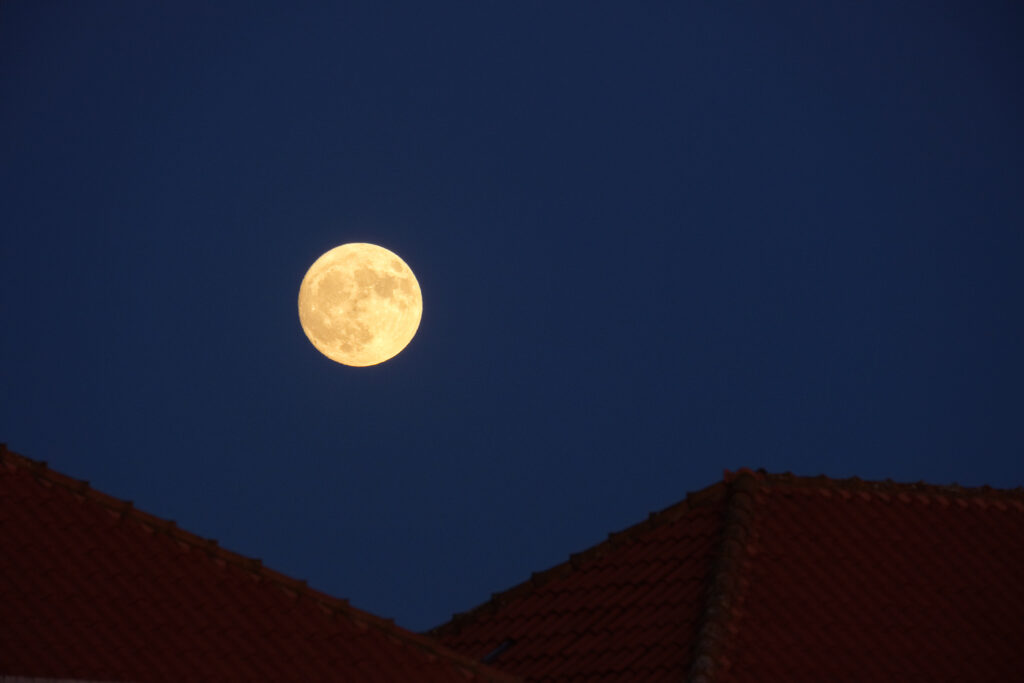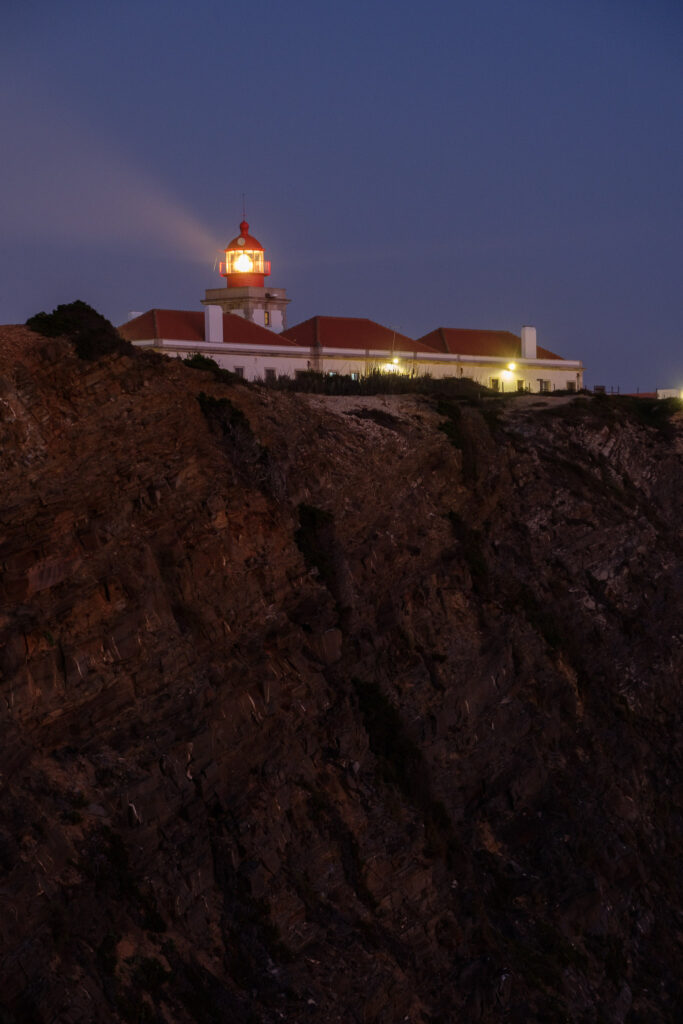This is a short piece about a photo walk I did this morning, near my house in Carcavelos. Since it was the day before being full, the moon would set a few minutes before sunrise. This is always a good opportunity to photograph the moon as part of the landscape, with some early natural light in the sky. It permits a better balance between the moon’s brightness and the rest of the composition. Furthermore, the moon is closer to Earth than normal, by about 27,000 km, which makes it a little bit brighter than normal – a so-called “super moon”. In practice, and with the naked eye, the difference is barely noticeable, so forget the social media hype; it is worth it to go out and photograph even when the moon is not “super”. Oh, and “blue moons” are more common than people think.
I left the house about 1 hour before sunrise, with the plan to head for the coast, near the beach of Carcavelos. My plan was to photograph our satellite as it descended towards the ocean in the horizon. I was hoping for clear skies, and I was happy to see that there were only a few wispy clouds; also, the usual fog bank coming from the Serra de Sintra was further away than normal, which was good news.
For these photos, I used the Fujifilm X-T4 camera, Fujinon 56mm f/1.2 lens (I wanted a short telephoto lens) and tripod. During the first few shots, the sky was still dark, creating a large brightness contrast with the moon; even with a negative exposure compensation of 5 stops, it was a challenge to try and preserve some detail on the moon. Still, I made some interesting photos, by including passing cars.
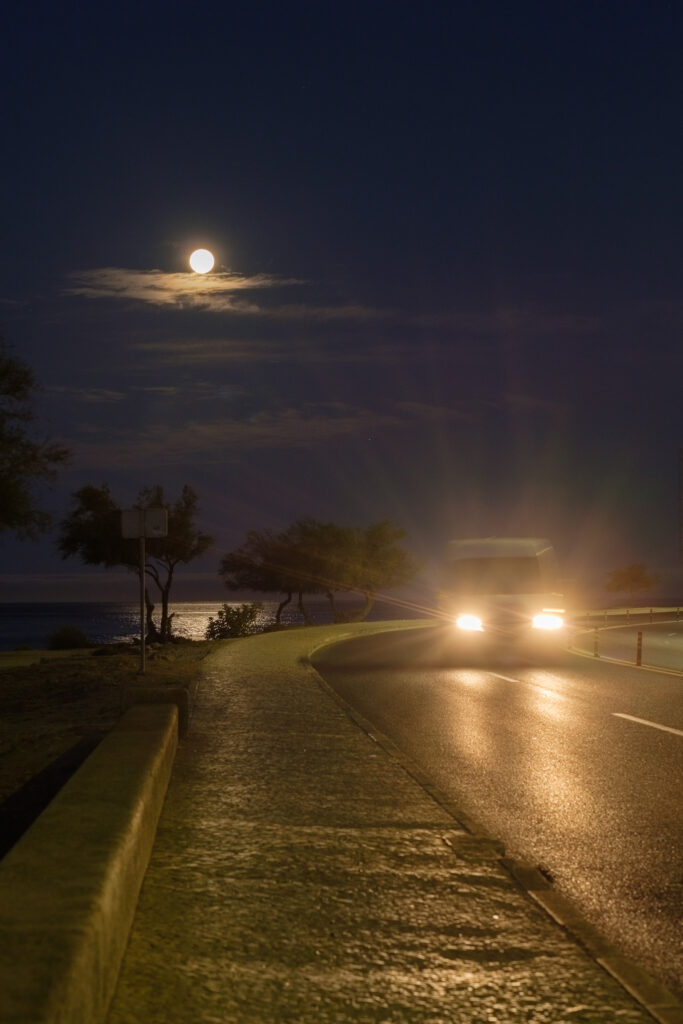
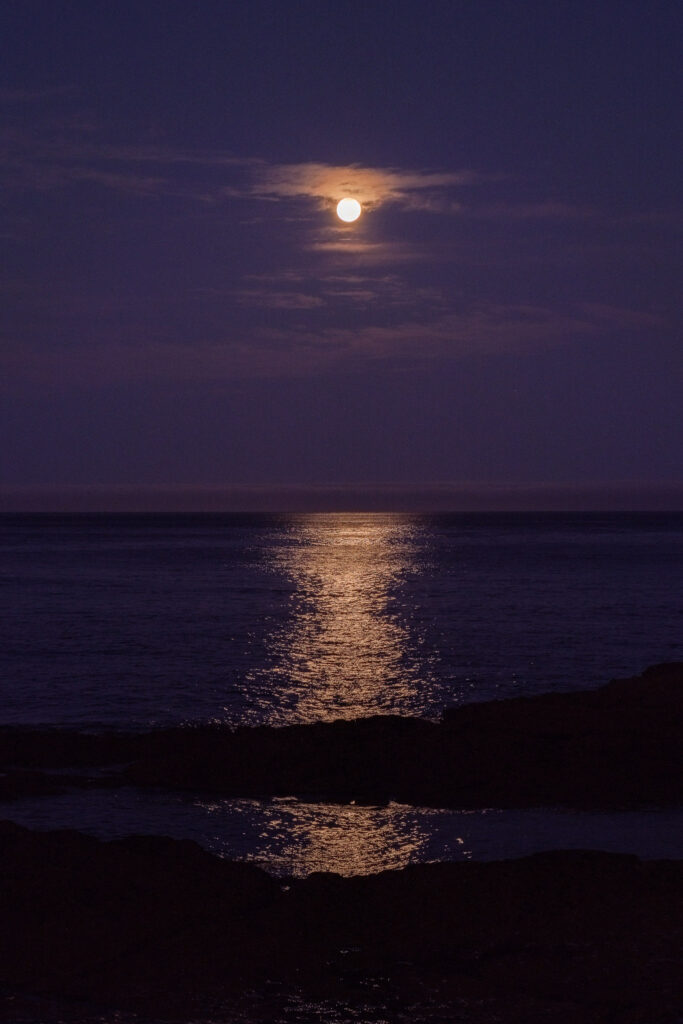
As the eastern horizon started to slowly brighten, so the light began to change very quickly, entering the blue hour period.
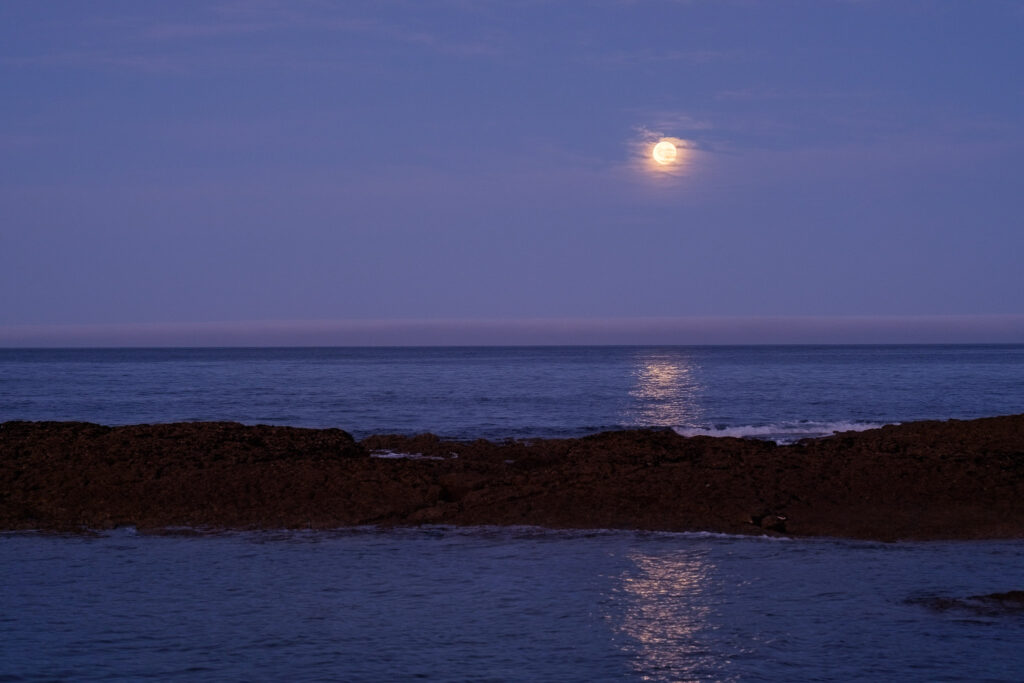
Even though I was paying attention to the moon, on my back the light was becoming increasingly golden, and the clouds were reflecting this light, with pink and orange colours. I was in the middle of the transition between night and day.
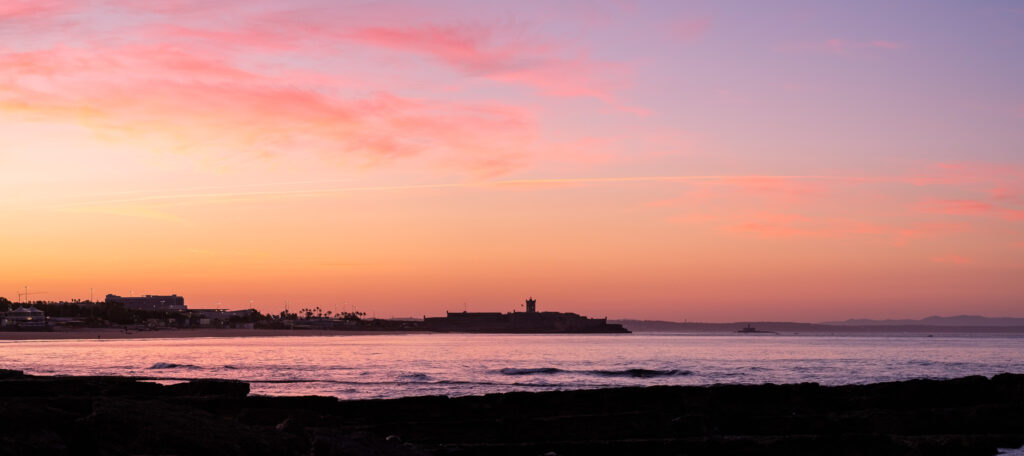
Turning my camera back to the west, I framed the moon between some rocks, adding interest and context to the composition. The moon and the surrounding clouds were now also reflecting this golden light. I was feeling lucky, because the clouds were adding interest in the sky, but they were not obscuring the moon.
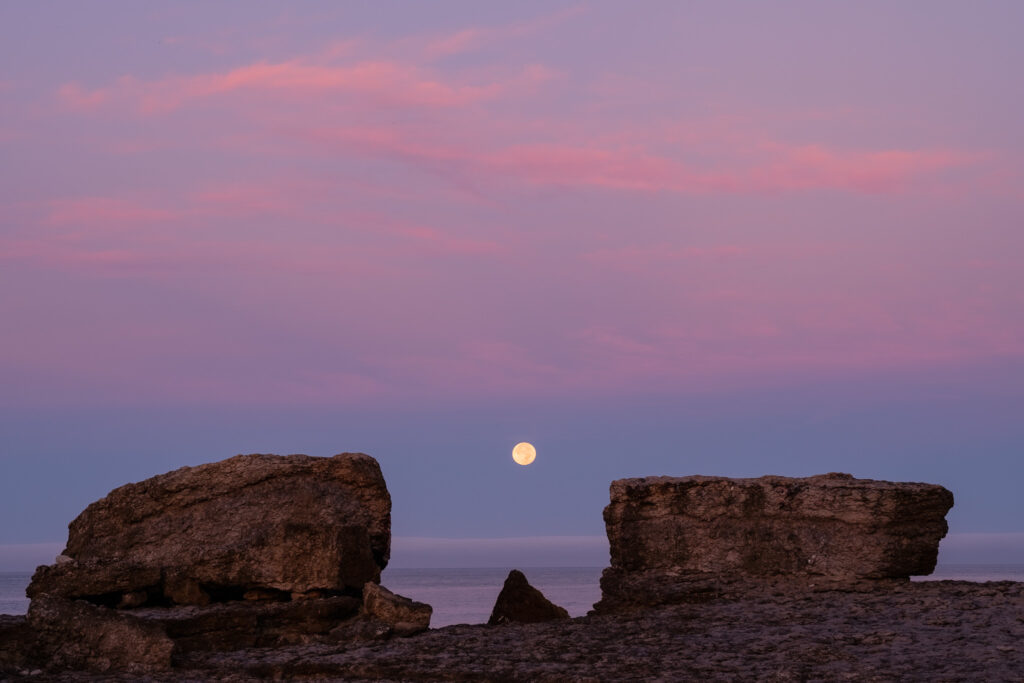
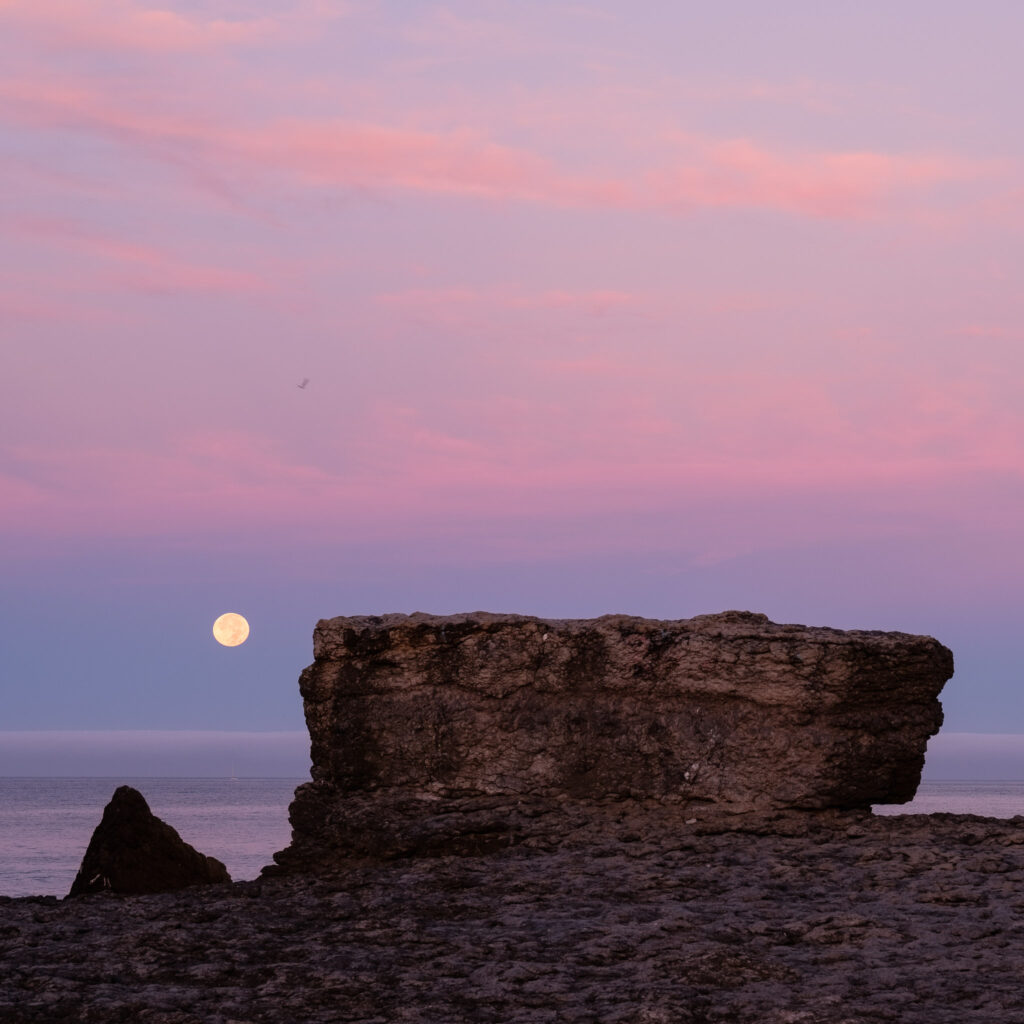
As I said, it was fortunate that the fog bank was really far away, so I could follow the moon almost until it disappeared in the distant horizon. Once the moon was gone, I packed up and went back home for a well deserved breakfast. I always enjoy these photo walks very much.
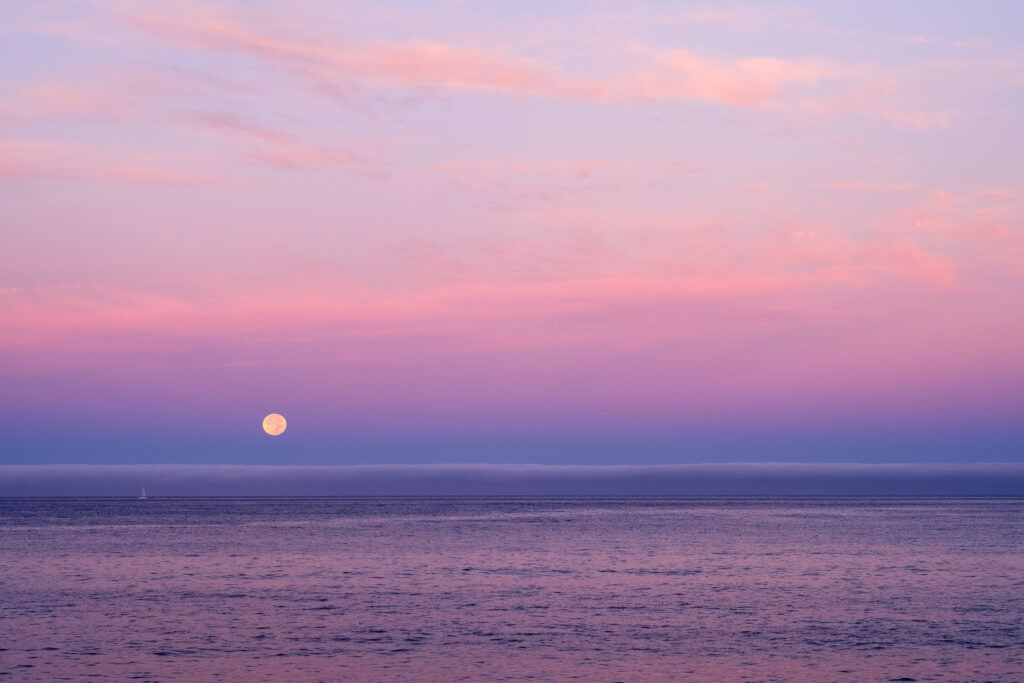
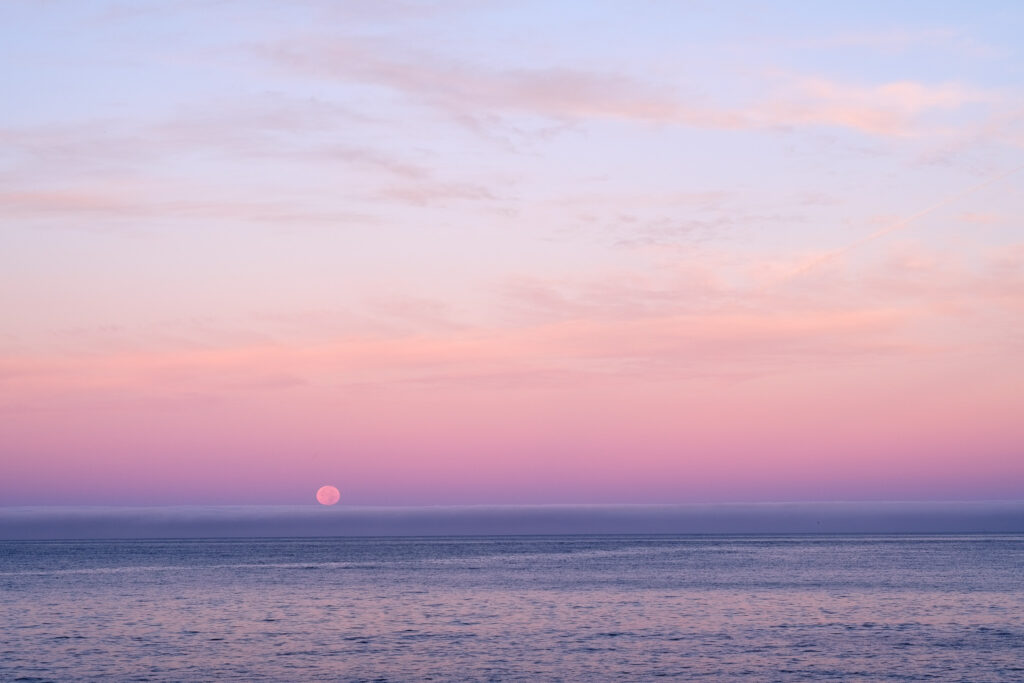
Note – the title of this article is my homage, with an obvious twist, to one of my favourite albums, that turns 50 this year.
